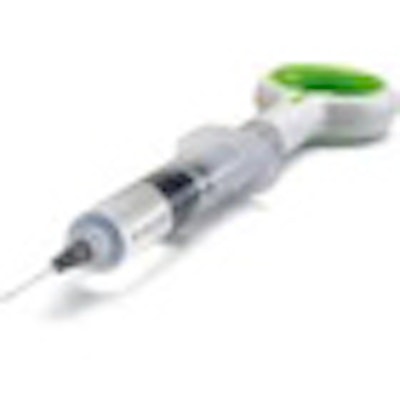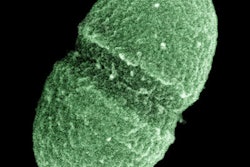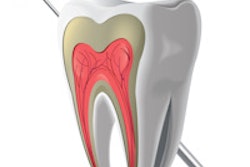
Although nearly 15 million root canals are performed each year (according to the American Association of Endodontists) and the success rate is excellent, the procedure is still so negatively regarded by patients and clinicians alike that hardly a days goes by you don't hear of some painful event being described as "as bad as getting a root canal."
While we can't completely change the public's perception of the procedure, new technology and improved techniques have brought us a long way from the endless hand filing and bleach-stained scrubs that once made dentists dread root canals as much as patients do.
Endo handpieces and nickel-titanium files are my favorite advances in this field, but even the best mechanical preparation leaves organic and inorganic material on the canal walls. It has been proved in numerous studies that successful treatment, including the prevention of reinfection, is not possible without proper cleaning and disinfection of the canals.
In fact, while high-tech files have garnered much of the limelight of late, advances in irrigation compounds should not be ignored.
Beyond sodium hypochlorite
The primary goals of irrigation are to remove the smear layer created by instrumentation, eliminate microorganisms (biofilm), and flush necrotic tissue from the entire canal system, including lateral canals, fins, and anastomoses.
“I only use chlorhexidine as a final rinse.”
— Julie Beasley, D.M.D.
Sodium hypochlorite (NaOCl) has long been the standard in root canal cleansers. It is potently antimicrobial and dissolves organic material. It also affects -- but doesn't remove -- the smear layer. Removal of the smear layer enhances obturation and decreases apical leakage. However, NaOCl may also cause pain and injure periapical tissues when it extrudes through the apex.
But a review of recent research published in Dental Clinics of North America concluded, "Although hypochlorite is the most important irrigating solution, no single irrigant can accomplish all the tasks required by irrigation" (April 2010, Vol. 54:2, pp 291-312).
So what might a clinician use besides passive irrigation with hypochlorite to get the job done?
The most commonly used root canal cleansers have very familiar names: chlorhexidine digluconate (CHX), EDTA, and citric acid (CA). CHX is antimicrobial, it doesn't erode dentin, and its odor doesn't alarm patients, but it doesn't remove the smear layer. EDTA and CA do dissolve inorganic material when left in contact with the tissue for two to three minutes.
As previously asserted, none of these agents used alone meet all the goals of irrigation but, in combination with NaOCl, they are very effective. Scanning electron microscopy analysis of canals irrigated with 5.25% NaOCl followed by 17% EDTA showed consistent disinfection and removal of smear plugs in the Dental Clinics of North America study. Avoid using NaOCl as the final rinse in combination with EDTA or CA, however, because it will rapidly erode the dentin in this combination.
Other factors
Frequent irrigation, the volume of irrigant, and time are also important factors. Enterococcus faecalis biofilm is not killed immediately in vivo because of the pH and presence of organic matter in the canals. Because CHX has been shown to have substantivity or lingering antimicrobial activity, many clinicians use it as the final rinse after EDTA or CA.
"In our practice, we use 5.25% sodium hypochlorite and 17% EDTA to irrigate," said Julie Beasley, D.M.D., an endodontist in Austin, TX. "I only use chlorhexidine as a final rinse and only if calcium hydroxide is not being placed. Chlorhexidine makes calcium hydroxide inactive. We don't use citric acid at all."
Several makers of combination products assert their "universal" agents eradicate the need for multiple syringes. Dentsply International claims its BioPure MTAD "eliminates the smear layer and bacteria from the root canal." The product combines a detergent, an acid, and doxycycline.
Another product, Tetraclean (Ogna Laboratori Farmaceutici), has similar ingredients. A comparative evaluation of the efficacy of NaOCl, MTAD, and Tetraclean by University of Brescia researcher Luciano Giardino, M.D., D.D.S., and colleagues found that 5.25% NaOCl killed many of the anaerobic bacteria responsible for primary endodontic infection, but that its action seems to be much lower against Enterococcus faecalis (Journal of Endodontics, July 2009, Vol. 33:7, pp. 852-855).
"MTAD and Tetraclean, on the other hand, showed a high action against both strictly anaerobic and facultative anaerobic bacteria," Dr. Giardino wrote.
The authors suggest further studies are necessary to determine if antibiotic-based irrigants are the best. As of now, don't dispose of your NaOCl. The makers of BioPure recommend rinsing the canal with -- you guessed it -- 1.3% NaOCl prior to irrigating with BioPure.
(Note: do not combine these agents chairside to save money. Use a separate syringe for each one. Otherwise, they turn odd colors and teeny sea horses grow in the liquid.)
Administering irrigants
Once you have decided on the best irrigant, what's the best way to use it? Here is a brief review of the top-selling systems:
- EndoActivator (Dentsply): Noncutting, solid polymer tips in a battery-operated handpiece hydrodynamically activate the irrigant. (Dr. Beasley is a big fan of the EndoActivator, which she describes as "very easy and convenient.")
- Vibringe (Vibringe): Battery-driven vibration of a syringe and open-end metal needle. Similar to traditional positive pressure irrigation with the addition of sonic vibration.
- EndoVac (Discus Dental): A cannula is placed in the canal, then the irrigant is sucked from the coronal portion, down the walls, and up the needle. Unique use of "negative pressure" makes it less likely to cause extrusion through the apex.
Activated fluids are more effective in removing tissue and opening the dentinal tubules along the entire length of a properly instrumented canal by allowing "complete penetration and exchange of irrigating solution" (International Endodontic Journal, May 11, 2010).
Other methods of disinfection, such as lasers and electrochemical activation, are available, but the general consensus is that sonic vibration with irrigation is a relatively safe, fast, and effective method for cleaning the root canal system.
Sonics or not, the fundamentals of endodontics have improved. Still, the keys to a successful root canal have not wavered: straight-line access, well-shaped/cleaned canals, 3D obturation, and a good coronal seal for predictable endodontic success.
Monica "Dr. mOe" Anderson, D.D.S., is a general dentist, writer, and motivational speaker in Austin, TX.
Copyright © 2010 DrBicuspid.com



















